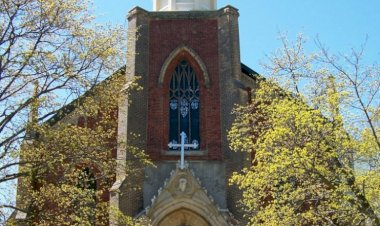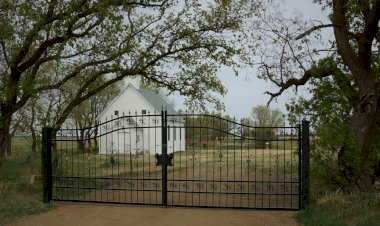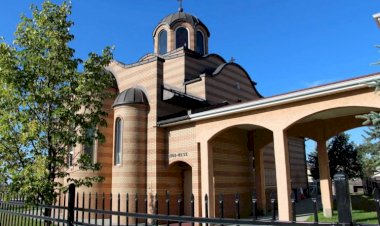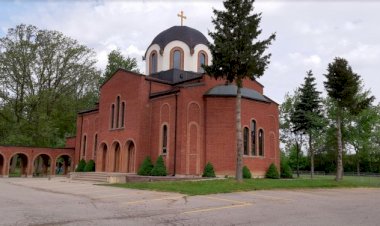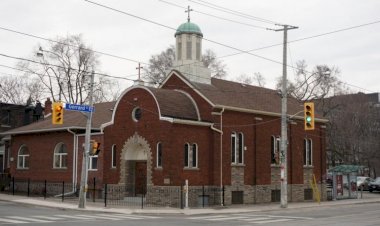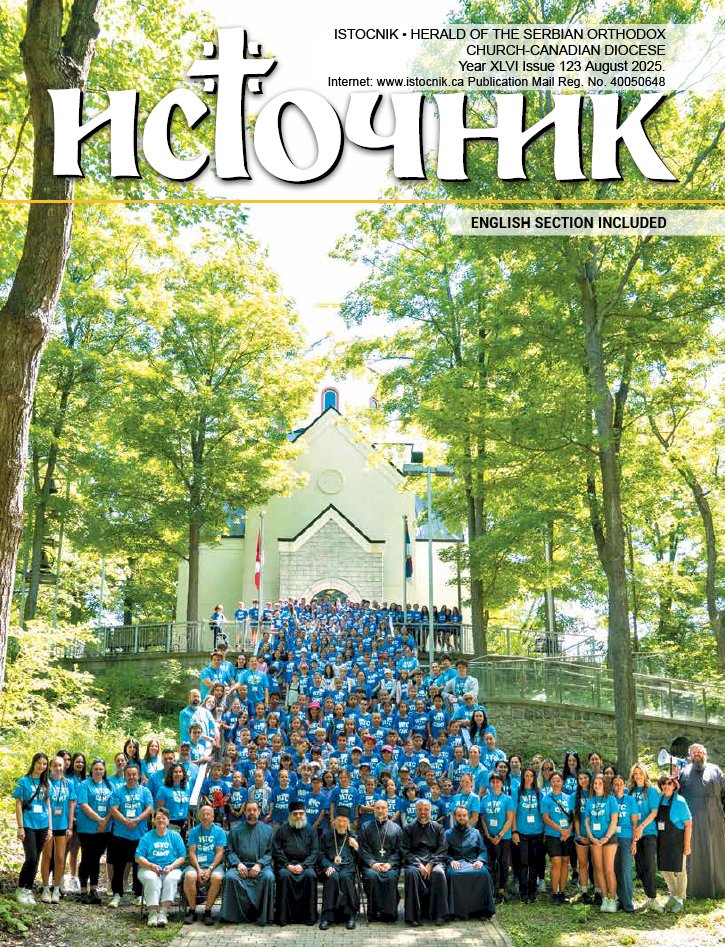Holy Trinity Church, Regina
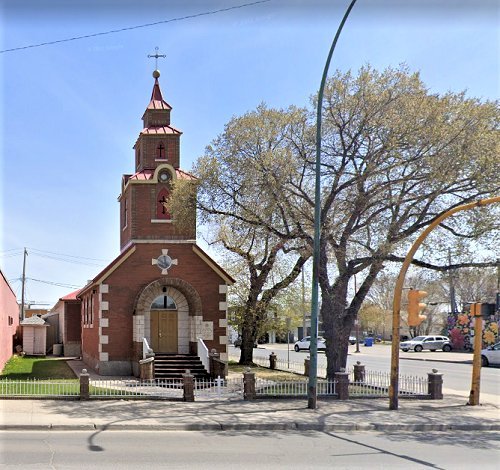
Holy Trinity Church, Regina
Address: 928 11th Avenue, Regina, Saskatchewan, S4N 0KL
Phone number: 306 352 6276
Priest: Fr. Obrad Filipovic (administrator; 403 244 3586 / protaobrad@gmail.com)
History
The Holy Trinity Serbian Orthodox Church in Regina is the first Serbian church built in Canada, built back in 1912. The first Serbs to arrive in Saskatchewan came during the second wave of Serbian emigration to Canada, between 1900 and 1914. They emigrated from the Austro-Hungarian provinces that once made up the Military Frontier. In Saskatchewan, they made their homestead in the rural municipality of MacRaney No. 282 between the Kenaston and Bloodworth areas, while others settled in Truax, Avonlea and Claybank. There, most of them were engaged in agriculture. A few moved to various places in Canada and the United States, where they sought different types of work in more tolerable climatic conditions.
Establishment of a Church and School Congregation
In 1912, those who remained in Regina and the surrounding area decided to establish a Church and School Congregation. 48 people were present at the first organizational meeting. They immediately began the process of building a church. Stevan and Sava Djurisic donated a plot of land on McAra Street where the future church would be built. It should be noted that other families also contributed to this great undertaking. These families were: Inic, Jakovljev, Skerletov, Maksimovic, Knezevic, Petrov, Velemirov, Trifunov, Milanov, Matic, Stojadinov, Erdeljan and others. Construction began in 1911 and was completed in 1912. The new church was built in the 17th block of McAra Street in the eastern part of the city.
Serbian activism quickly surged during the first two decades of the 20th century, fueled by the politics of the pre-World War I period and its aftermath, and by the emancipation of at least ten peoples (including the Kingdom of Serbs, Croats, and Slovenes) that had previously been part of the Austrian Empire. In Canada, Serbs in the Maritimes, Quebec, Ontario, the Prairies, British Columbia, and the northern Yukon Territories began to agitate for a change in British colonial policy toward their treatment of immigrants. The branding of anyone born in the Austro-Hungarian and Ottoman Empires as “enemy aliens” became intolerable not only in Regina but elsewhere in the vast expanse of the Dominion of Canada. Hundreds of front-page headlines in newspapers spoke of the injustice resulting from the draconian measures imposed by Ottawa and London. In a speech in Regina, war veteran Bud Protic raised the issue of recognizing Serbs and Serbia as allies of the British Empire.
After the war, the Serbs of Regina gathered on March 6, 1919, to make generous donations to the Serbian Relief Committee of Saskatchewan after Helen Losanic Frothingham visited and spoke about the hardships in Serbia. In 1925, nearly 500 people attended Easter services at the small church on McAra Street. Another significant year was 1933, when the church was moved 18 blocks away to 11th Avenue and Winnipeg Street. Two years later, a parish hall was built on the same site, next to the church.
The fiftieth anniversary of the Holy Trinity Church in Regina was celebrated in 1966 with much pomp, activity and the publication of a commemorative book. But from then on, the life of the Church in this area seemed to wane in the 1970s until the Sports Centre was formed under the auspices of the church with the approval of the Diocese. The parish house and the episcopal residence in the same building were consecrated on October 29, 1980 by Bishop Sava (Vukovic). Bishop Hristofor (Kovacevich) visited Regina for the first time on August 6, 1983 in the hope of reviving this church community, since the parish had been without a regular priest since 1968.
With the arrival of Fr. Mirko Malinovic and new settlers in Regina in 1985, the possibilities for the renewal of church life grew. Father Mirko took care of his parish duties, but he mostly led the parish educational program, which was lacking at the time. He was assisted by the volunteer staff of the Church and School Congregation. Soon a new breath of life came to the parish. In 1991, the Church of the Holy Trinity needed major repairs after 75 years of existence. At a special meeting, the assembly decided to restore the church. By 1992, it was completely renovated. Bishop Georgije of Canada placed part of the relics of Saint Lazar in the altar of the restored church. A new iconostasis was installed, made by the woodcarver Momcilo Milosevic from Preljina near Cacak. The frescoes were painted by Dragomir "Dragan" Marunic from Belgrade.
Members of the Church and School Congregation generously donated money for the construction of the Temple of Saint Sava on the Vracar Plateau in Belgrade and collected aid for Serbian refugees during the difficult and crisis years at the end of the twentieth century. The Church and School Congregation was a great benefactor of the Holy Transfiguration Monastery in Milton. On the recommendation of Bishop Georgije, the Holy Synod of the Serbian Orthodox Church awarded the Church and School Congregation the Order of Saint Sava.
Centennial of the church
In 2012, on the centennial of the founding of this parish, two significant events were held. To mark this significant anniversary, the Holy Liturgy was celebrated with a procession around the church. Five priests concelebrated the Holy Liturgy. In addition, special celebrations with food and entertainment were held to mark this celebration, which was attended by people from all over the country to participate in this significant moment for the Diocese of Canada.


